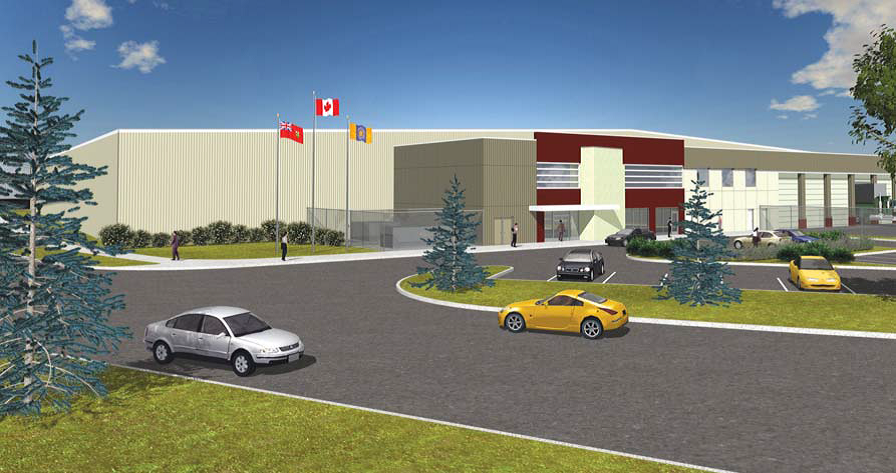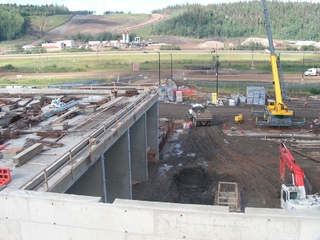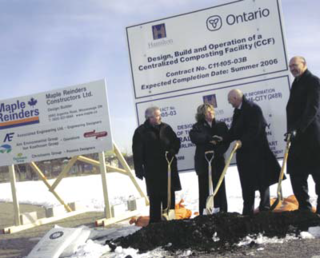Hamilton

Together with a highly skilled and experienced team (Maple Reinders,
Associated Engineering, Aim Waste Management and Van Kaathoven Groep)
Christiaens Group was responsible for the realization of the
Design/Build/Operate project: Hamilton Centralized Composting Facility.
This facility turns 60.000 tonnes of residential curb-side waste into a rich,
organic soil material – in the City of Hamilton’s terms – ‘Black Gold’. More
important; this facility helps the City to achieve its mandate to divert its solid
waste stream by 65% in the year 2008.
Maple Reinders, along with key project partners Associated Engineering,
Aim Waste Management and The Christiaens Group of the Netherlands,
has undertaken a benchmark Design/Build/Operate project to create a
new centralized compost facility for the City of Hamilton. The 115,000
square foot in-vessel composting facility will process 60,000 tonnes of residential
curb-side wet waste into a rich, organic soil material - in the City
of Hamilton’s terms - “Black Gold. The new compost facility will help the
City achieve its mandate to divert its current solid waste stream by 65%
by the year 2008. The Hamilton composting process resembles typical
backyard composting, but is accelerated using science and automation:
Collection: Organic waste is collected in a “green cart” at the curb, and
transported to the new facility, where it is unloaded, shredded and conveyed
to an empty compost tunnel through roof openings.An automated
filling cassette travels the length of the tunnel to ensure even distribution.
Phase 1 Composting: Once the tunnel is filled, the ageing process
commences. Foul air is recycled, and only a small amount is exhausted
through a large organic biofilter.After 7-10 days, the tunnel is emptied and
the Phase 2 tunnels are filled.
Phase 2 Composting: Phase 2 tunnels allow the compost to mature
for an additional 7-10 days. Once complete, loaders remove the compost
from the tunnel to be screened for all unacceptable materials, and refined
to a specific marketable size. After screening, the compost is conveyed to
an outdoor covered curing area.
Final Product: After curing, the compost is shipped to outlying markets,
such as local nursery operations, for potting soils. The environmental
benefits of such a bold composting program are self-evident, but extra
value will be realized by turning waste into a marketable, profitable end
product.




